Log in or create new account to save this product to your wishlist.
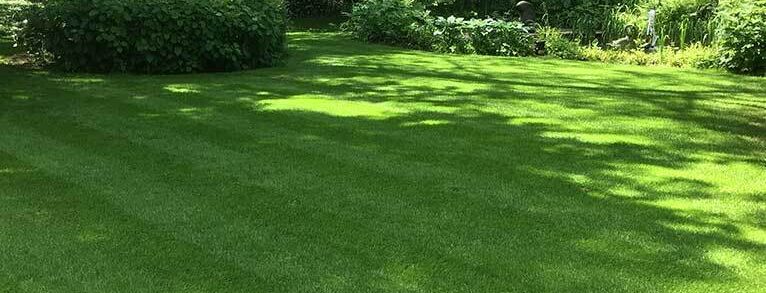
How to Design Your Perfect North-Facing Garden
North-facing gardens get less light than gardens of other orientations. But you can still bring it to life with the right plants and conditions. Find out how to make the most of your north-facing orientation.
🌱 All important maintenance moments for your lawn during the year. Leave your email and we will send you the lawn calendar for free.
Enter your email
Receive the lawn calendar in the mail
Enjoy a green lawn all year round!

- Order by 2PM = shipped today
- 250.000+ satisfied customers!
- 60 day satisfaction guarantee
You might feel like you pulled the short straw with a north-facing garden, but, actually, this is one garden configuration that’s largely misrepresented. Because a north-facing garden isn’t inferior, it’s a gift — you just have to know what to do with it.
- The type of sun you get on the north side
- The pros of a north-facing garden
- The cons of a north-facing garden
- The ideal plants for a northern-facing garden
- How to maintain a garden with a northern orientation
- Lawn care
- What type of soil is best for a north-facing garden?
- Plant pruning
- Flowering times in a north-facing garden
- FAQs
Sure, north-facing gardens get much less sun than other gardens, but with effective planning, you can release its potential. After all, those south-facing gardens can be too hot, demanding parasols, awnings, and pergolas to offer some much-needed shade. Even some vegetables are happy in shady north-facing gardens.
So fret not!
This article explores how to make the most of your north-facing garden.
Ready? Let’s get planning!
The type of sun you get on the north side
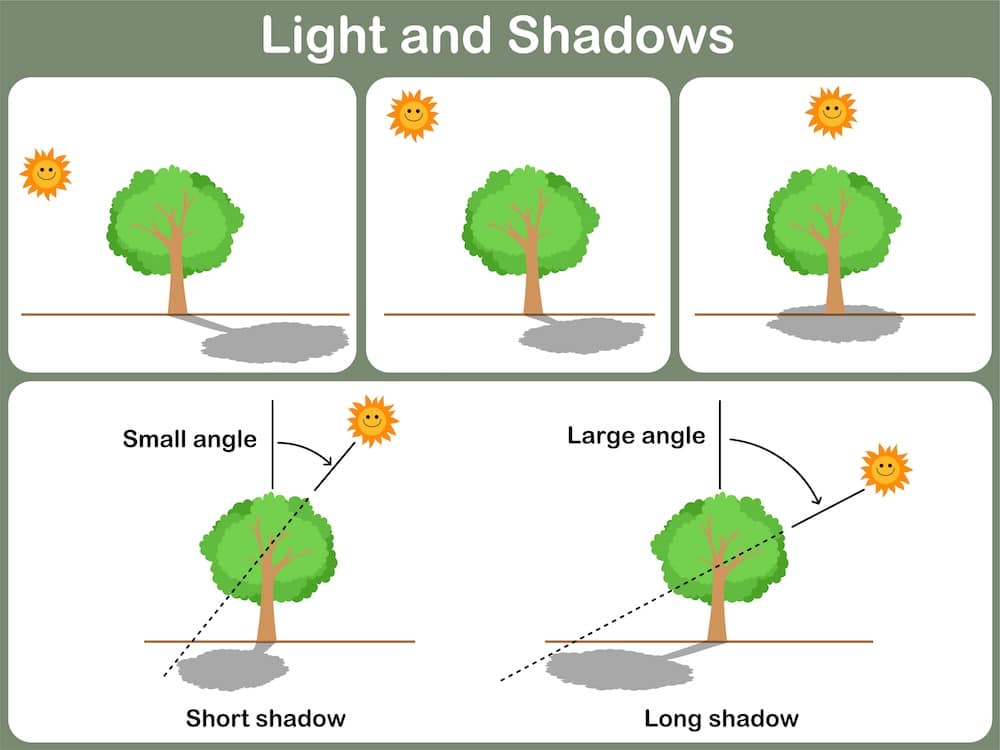
The sun rises in the east and sets in the west, so east/west-facing gardens get sunlight in the morning or afternoon, but never usually both. South-facing gardens enjoy direct sunlight all day (unless there are obstacles such as walls, buildings, awnings, etc.).
So, are north-facing gardens always in the dark?
Well, no. Not really — it depends on the obstructions around your garden that might shield the light. Think about it: you can stand on the beach and face north — you’ll still get sunlight exposure; you’ll just never be looking directly at the sun.
So, when the sun is high in the sky in midsummer, an unshielded north-facing garden will still get plenty of noontime daylight.
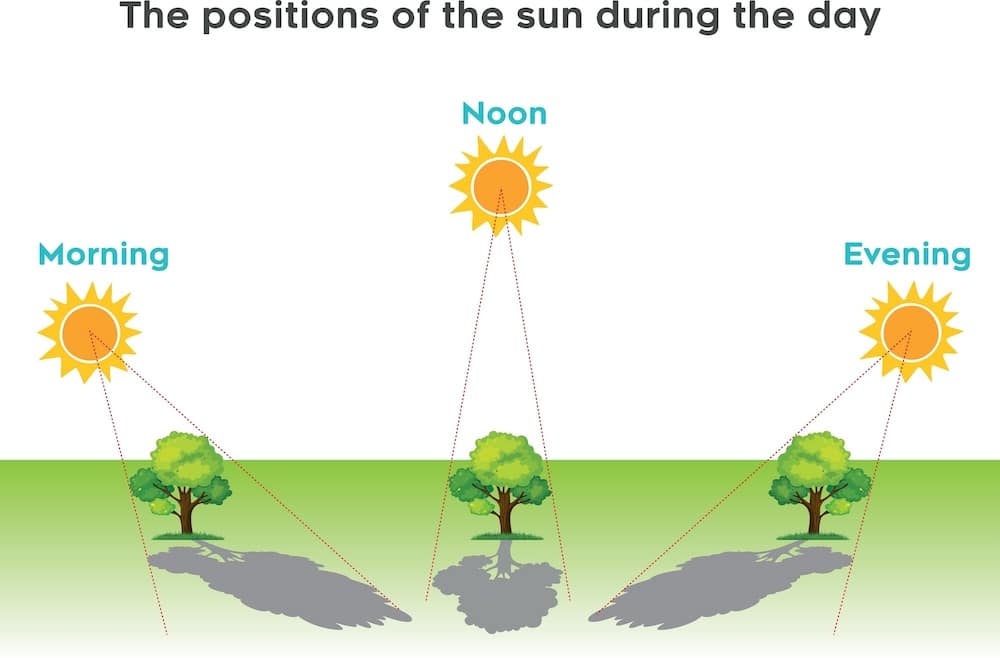
Remember: the sun wanders!
Consider the times you’re most likely to sit in your garden, and think about the location of unfiltered sunlight at that time of day. This is where to locate your seating and entertainment areas.
Remember, the sun’s angle changes throughout the day, so a few maths calculations at the planning stage will pay off when you finally get to put your feet up in the sun.
For example:
- For afternoon sun, ensure there’s a clear sightline from the west
- For morning sun, keep the east side of your garden clear
Check our little diagram below!
So, while a north-facing garden results in a shadier environment and cooler temperatures, this has its pros and cons:
The pros of a north-facing garden
Consider your garden’s unique properties and how to monopolise on them.
For example, a north-facing garden is:
- Ideal for shade-loving plants — think ferns, hostas, heucheras, ivy.
- Reduced watering — north-facing gardens are less exposed to direct sunlight, so they need less additional watering because the water evaporates more slowly.
- Less exposed — direct sunlight fades garden furniture more quickly and is cooler in the summer.
Remember, shade-loving plants are as beautiful and abundant as sun-loving plants — you just need to know which plants to choose for a shady garden. Check out our expert’s guide to selecting plants for a shady garden!
The cons of a north-facing garden
All gardens have their disadvantages, even south-facing gardens that dry out too quickly and are too hot in the summer.
The typical disadvantages of a north-facing garden include:
- More limited plant choice — while hundreds of flowering and foliage plants thrive in the shade, some plants won’t grow.
- Slower growth – plants in a north-facing garden may grow more slowly — but that means less pruning, so win-win. Also, many shade-loving plants have smaller flowers.
- Cooler temperatures — some plants need direct sunlight and heat to thrive. So, again, it’s a case of choosing the appropriate plants for your garden’s conditions.
The ideal plants for a northern-facing garden
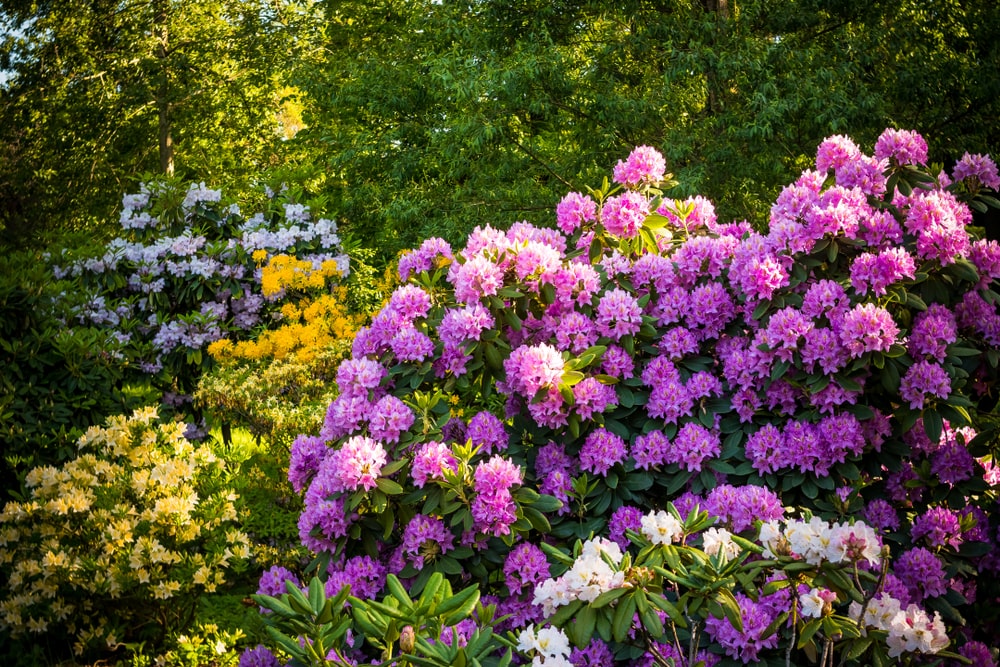
There’s a wealth of plants that will thrive in your garden’s unique conditions, including:
Flowering plants
- Fuchsia (Fuchsia)
- Begonias (Begonia)
- Astilbes (Astilbe)
- Larkspurs (Delphinium)
- Funkia (Hosta)
- Periwinkle (Vinca)
- Hydrangeas (Hydrangea)
Evergreen plants
- Boxwood (Buxus sempervirens)
- Rhododendron (Rhododendron)
- Yews (Taxus)
- Cherry laurel (Prunus laurocerasus)
- Holly (Ilex)
- Mahonia (Mahonia)
- Tree of Life (Thuja)
Shrubs
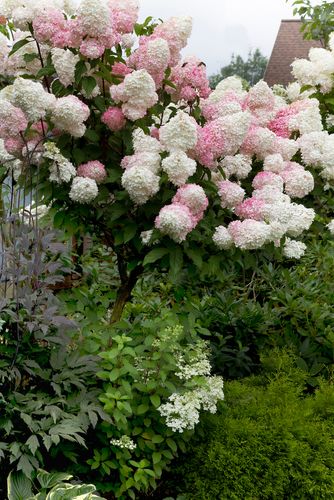
- Woodruff (Galium odoratum)
- Lady’s Mantle (Alchemilla)
- Hydrangea
- Astilbe
- Columbine (Aquilegia)
- Funkie (Hosta)
- Lungwort (Pulmonaria)
- Shadow bellflower (Campanula poscharskyana)
Grasses
- Shade-tolerant ornamental grass (Deschampsia cespitosa)
- Forest marble (Luzula sylvatica)
- Japanese sedge (Carex morrowii)
- Blue fescue (Festuca glauca)
- Reed grass (Phalaris arundinacea)
- Pipe grass (Molinia caerulea)
- Forest riding grass (Calamagrostis acutiflora)
Vegetable
- Radish
- Carrots
- Corn salad
- Kohlrabi
- Sugar snap peas
- Rhubarb
- Bush beans
Trees for a garden with northern orientation
- European beech (Fagus sylvatica)
- Hornbeam (Carpinus betulus)
- Common Ash (Fraxinus excelsior)
- Field maple (Acer campestre)
- Lime tree (Tilia cordata)
- Black alder (Alnus glutinosa)
- European yew (Taxus baccata)
How to maintain a garden with a northern orientation
Your north-facing garden will have an ecosystem of its own. You’ll notice that spring bulbs appear later than in exposed gardens because the soil takes longer to warm up.
However, this also means you’ll enjoy flowering plants for longer than everyone else. Because when the daffodils everywhere else have blown, you’ll enjoy them in your back garden!
So, you’ll have later seasons, and you’ll need to start mowing your lawn a little later.
Lawn care
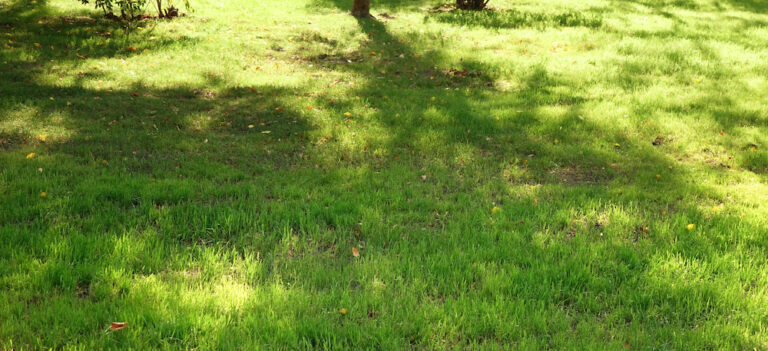
Most grass plants need lots of sun to thrive. So, grass species that thrive in a south-facing garden will look weedy, thin, and tired in a north-facing lawn.
But never fear — you just need to choose the right grass seed variety, like MOOWY’s Shade & Sun grass seed, which thrives in the shade and the sun!
For germination, the soil needs to be higher than 10℃, and while south-facing lawns reach that temperature early in March, a north-facing lawn might not get there till April/May. So, use a soil thermometer before sowing new grass seed to ensure it’s warm enough.
How to sow a new lawn
Before sowing new lawn seed, check for moss and scarify if necessary. And aerate if the soil is compacted.
Then, scatter high-quality lawn seeds over your existing lawn (for overseeding) or a prepared bed (for a new lawn). Press the seeds into the soil and water, being careful to avoid disturbing the seeds.
And within two weeks to a month, you’ll see healthy new growth.
Check out our expert articles for more information about sowing a new lawn!
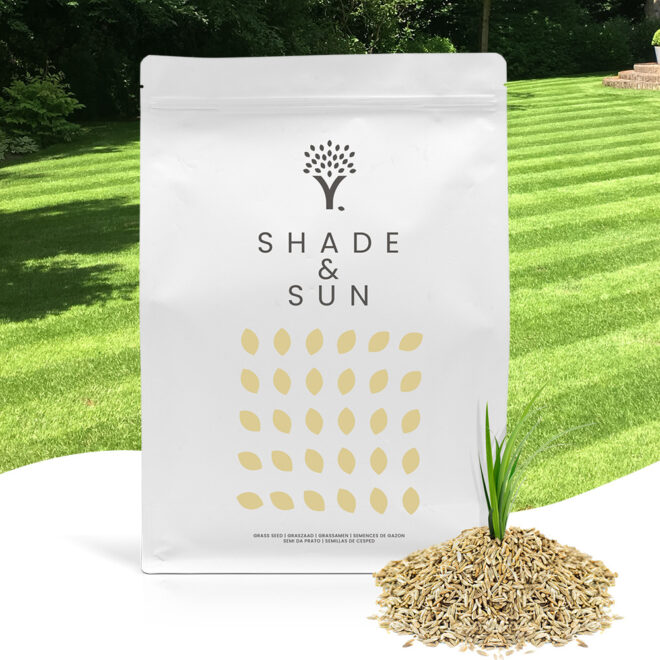
- Grows underneath trees and in shady areas
- Also thrives in full sun
- Robust and resistant
Protect your lawn from moss
Your north-facing garden is likely to have damp, cool soil and low light exposure, which are perfect conditions for moss. So, collect your grass clippings after mowing and scarify regularly.

- Everything you need to help your lawn bounce back after scarifying
- Grass seed for overfeeding
- Iron sulphate to kill the moss and feed the soil
Fertilise your lawn
Because your north-facing lawn takes longer to warm up in the spring, I’d recommend leaving it until mid-April before fertilising your turf. This gives the soil enough time to warm up for fresh growth and activate the feed’s chemicals.
Your lower-light lawn typically requires less fertiliser than a south-facing garden, so I’d recommend using ¾ of the recommended amount.
-
All-Round Lawn Fertiliser
 Delivered tomorrow11.99
Delivered tomorrow11.99- Order by 2PM = shipped today
- 250.000+ satisfied customers!
- 60 day satisfaction guarantee
-
TopLong Lasting Lawn Fertiliser
 Delivered tomorrow12.99
Delivered tomorrow12.99- Order by 2PM = shipped today
- 250.000+ satisfied customers!
- 60 day satisfaction guarantee
-
Lawn Starter Fertiliser
 Delivered tomorrow11.99
Delivered tomorrow11.99- Order by 2PM = shipped today
- 250.000+ satisfied customers!
- 60 day satisfaction guarantee
Watering your north-facing lawn
Since less water evaporates in a north-facing lawn, you won’t need to water as regularly as other gardeners.
So, check for moisture before watering — stick your finger into the top inch of the earth, and if you feel water, leave it a bit longer before getting the hose out. If it’s dry, give it some water.
This applies to lawns and flower beds.
What type of soil is best for a north-facing garden?
All gardens need freely draining soil. If you have heavy clay earth, it’s likely to flood or become soggy, rotting plant roots. Indeed, soil type is all the more critical for gardens with a northern orientation.
So, add organic matter, like compost, manure, or leaf mould, to heavy soil to improve drainage. Alternativey, if you have sandy soil, add organic matter to help it retain moisture.
Check out my expert’s guide to improving your garden soil.
Plant pruning

The growing season for a garden with a northern orientation is typically shorter and later than other outdoor spaces. And this means you won’t have to prune as regularly.
Prune when plants become overgrown or are losing their shape. All plants benefit from regular pruning, so don’t neglect it when needed.
However, deadhead your flowering plants as usual — this encourages new growth.
Flowering times in a north-facing garden
Everything germinates, grows, and blooms in its own time in a northern-facing garden.
Here are some examples of flowering times you might expect:
- Fuchsia: Summer, around mid-July
- Begonias (Begonia): June to October
- Astilbes (Astilbe): July to September.
- Larkspurs (Delphinium): once in July and then again in September
- Hosta: August to September
- Evergreen (Vinca): May to July, sometimes into autumn
- Hydrangeas (Hydrangea): July to October
FAQs
Choose shade-loving plants that thrive in limited or indirect daylight, like snowdrops, lily of the valley, hostas, rhododendrons, honeysuckle, sweet peas, hydrangea, foxglove, bluebells, lungwort, and climbing roses.
Gardens facing north get less sunlight if walls, fences, trees, or tall buildings surround them. Unobstructed north-facing gardens get as much sunlight as other gardens. However, a shielded north-facing garden usually receives a few hours of direct sunlight each day in the summer.
The biggest problem is a lack of direct sunlight if trees, fences, walls, or buildings shield the garden. So, choose shade-loving plants which offer beautiful foliage and pretty flowers throughout the year. Many shade-loving plants flower well into the winter, making them a good choice for year-round colour.
Any questions?
I hope I’ve provided all the information you need to make some crucial decisions about how you design and maintain your north-facing garden. But if you have any questions, don’t hesitate to get in touch.
Or explore our comprehensive Help & Advice section.
Thanks for reading, and happy gardening!
-
How to Grow Eucalyptus in British GardensWith a little love and care, eucalyptus trees can thrive in English gardens. Since they don’t germinate well without proper help, there are not considered invasive. So, there is no reason not to plant them if you enjoy their looks.Read more
-
Transform Your Garden with All-Year-Round Flowering PlantsDid you know you can enjoy blooming flowers even in January? With the right selection of all year round plants, there’s no need to wait until spring to add some colour to your garden.Read more
-
How to Create a Butterfly Garden: A Simple Guide for British GardensThe UK's butterfly population includes 59 different species. These beautiful winged creatures face a steady decline because of habitat loss, pollution and changing weather patterns. Your garden can become a vital link between nature reserves and natural habitats. Let’s explore how.Read more
-
Volcanic Rock Dust for Your Garden—Application and TipsDid you know that volcanic rock dust is a brilliant organic soil improver? This article explains exactly what it's good for and how to use it properly.Read more
-
How to Use Landscape Fabric ProperlyIf weeds or erosion in your garden are troubling you, landscape fabric might be the solution. We’ll explain how and when to use it properly, just keep on reading.Read more
-
Hostas: A Complete Care GuideIf you have a north-facing garden or some shady corners on your property, hostas are the plants for you. These green delights thrive particularly well in partial to full shade and require consistently moist soil to perform at their best.Read more
-
How to Grow Grapes in Your Garden: A Simple Step-by-Step GuideGrapevines produce some tasty fruits, but often they are simply grown for their gorgeous leaves. Whatever your motivation may be, we have a guide on how to grow grapes for you.Read more
-
Worm Composting Made Simple: From Kitchen Scraps to Garden GoldDid you know that a single pound of composting worms can devour half their body weight in waste every day? That's roughly twelve pounds of kitchen scraps transformed into garden gold each month! We will look at how to make this happen.Read more
Leave a comment
Your answer will be displayed on the site and the interested party will be notified by email.
Leave a comment
Have a question or want to share your experience? Leave us a comment.

- Order by 2PM = shipped today
- 250.000+ satisfied customers!
- 60 day satisfaction guarantee

- Order by 2PM = shipped today
- 250.000+ satisfied customers!
- 60 day satisfaction guarantee

- Order by 2PM = shipped today
- 250.000+ satisfied customers!
- 60 day satisfaction guarantee

🌱 All important maintenance moments for your lawn during the year. Leave your email and we will send you the lawn calendar for free.
Enter your email
Receive the lawn calendar in the mail
Enjoy a green lawn all year round!



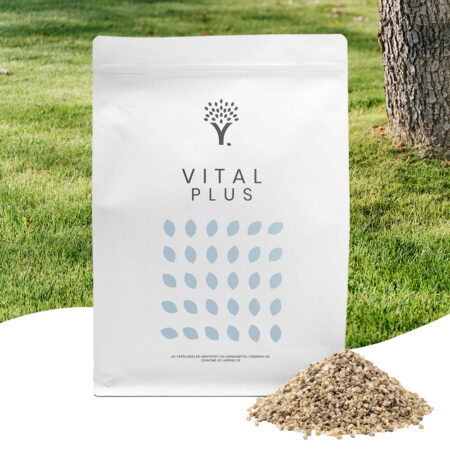
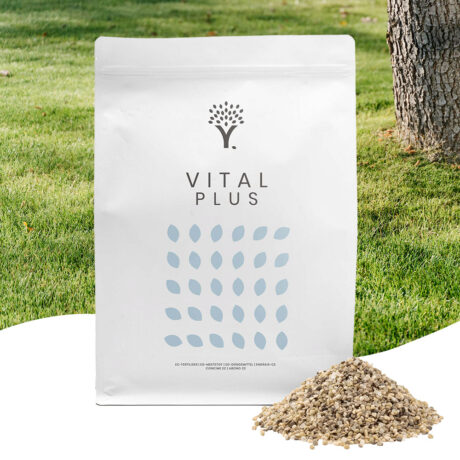

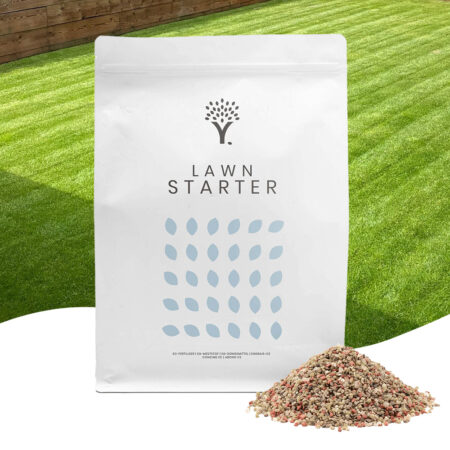
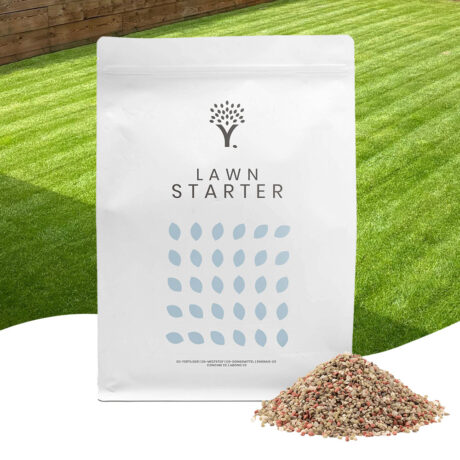









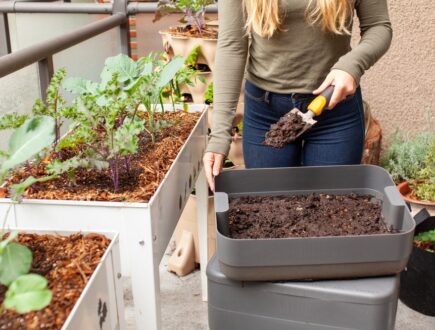


 Summer Deal! Get 15% off the
Summer Deal! Get 15% off the 




Comments (0)
There are no comments yet. Well then, what are you waiting for to
Be the first to write your comment!inaugurate this pretty page?
Do you have some comments?